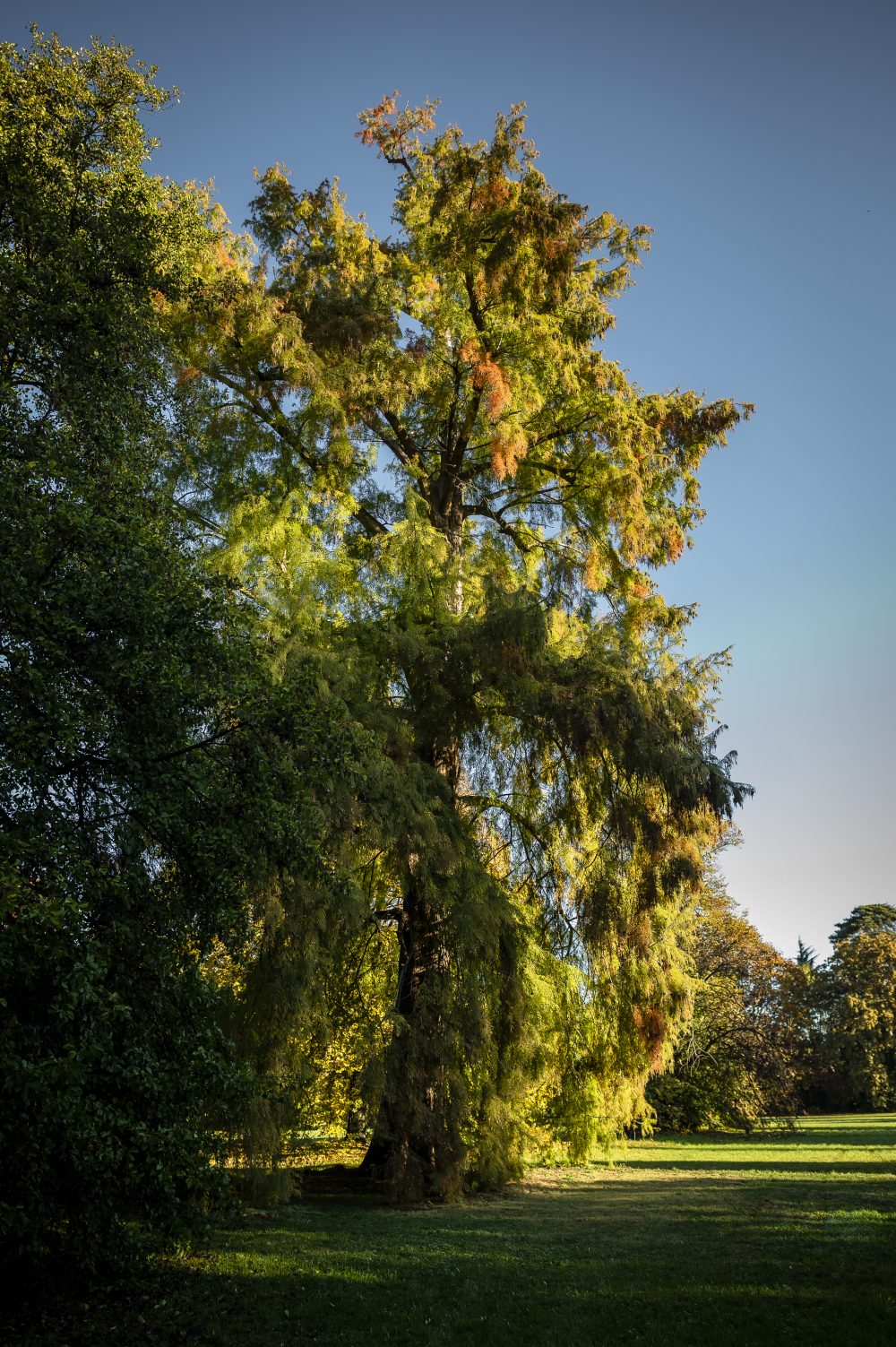Monumental Trees
Throughout this journey together, we have often spoken of monumental trees. But what is a monumental tree? A monumental tree or plant refers to a plant of significant landscape, natural, historical, and cultural value which is generally officially recorded due to certain distinctive features. Criteria for defining a tree as monumental can include its size, longevity, rarity, historical, landscape, or architectural interest. In Italy, the general criteria for defining monumental trees were established by certain articles of Law No. 10 of January 14, 2013. The total number of monumental trees in Italy amounts to 4,288 specimens. In Piedmont, where there are 319, and here, in Miradolo Castle, there are as many as 5, distinguished by age, size, shape, or stature. Up to this point, we have numbers, objective criteria, legislation; but what does it mean, what does it imply to stand before a monumental tree? It implies care and respect, certainly, but perhaps, more importantly, the possibility of setting aside a system of thought that positions us as dominant entities over nature or as its standard of measure: age and time, height, or size cannot be reduced to a human scale. Some of these trees were already fully grown when the French Revolution erupted, when the American Constitution was written, when a united Italy did not exist. These trees were already here before Monet's Water Lilies, before Manzoni's The Betrothed, before Beethoven's Ninth Symphony. Some are taller than the stage at La Scala or the Pyramid at the Louvre. The first eyes that saw them gazed upon unpaved streets and skies without airplanes. Even today, when we encounter a monumental tree, we have the opportunity to know who we have been, where we come from, what horizons we have looked at and still look at, and what we imagine might remain of our lives.

Throughout this journey together, we have often spoken of monumental trees. But what is a monumental tree? A monumental tree or plant refers to a plant of significant landscape, natural, historical, and cultural value which is generally officially recorded due to certain distinctive features. Criteria for defining a tree as monumental can include its size, longevity, rarity, historical, landscape, or architectural interest. In Italy, the general criteria for defining monumental trees were established by certain articles of Law No. 10 of January 14, 2013. The total number of monumental trees in Italy amounts to 4,288 specimens. In Piedmont, where there are 319, and here, in Miradolo Castle, there are as many as 5, distinguished by age, size, shape, or stature. Up to this point, we have numbers, objective criteria, legislation; but what does it mean, what does it imply to stand before a monumental tree? It implies care and respect, certainly, but perhaps, more importantly, the possibility of setting aside a system of thought that positions us as dominant entities over nature or as its standard of measure: age and time, height, or size cannot be reduced to a human scale. Some of these trees were already fully grown when the French Revolution erupted, when the American Constitution was written, when a united Italy did not exist. These trees were already here before Monet’s Water Lilies, before Manzoni’s The Betrothed, before Beethoven’s Ninth Symphony. Some are taller than the stage at La Scala or the Pyramid at the Louvre. The first eyes that saw them gazed upon unpaved streets and skies without airplanes. Even today, when we encounter a monumental tree, we have the opportunity to know who we have been, where we come from, what horizons we have looked at and still look at, and what we imagine might remain of our lives.
Audio
I punti di interesse
Ti trovi qui
